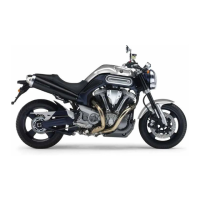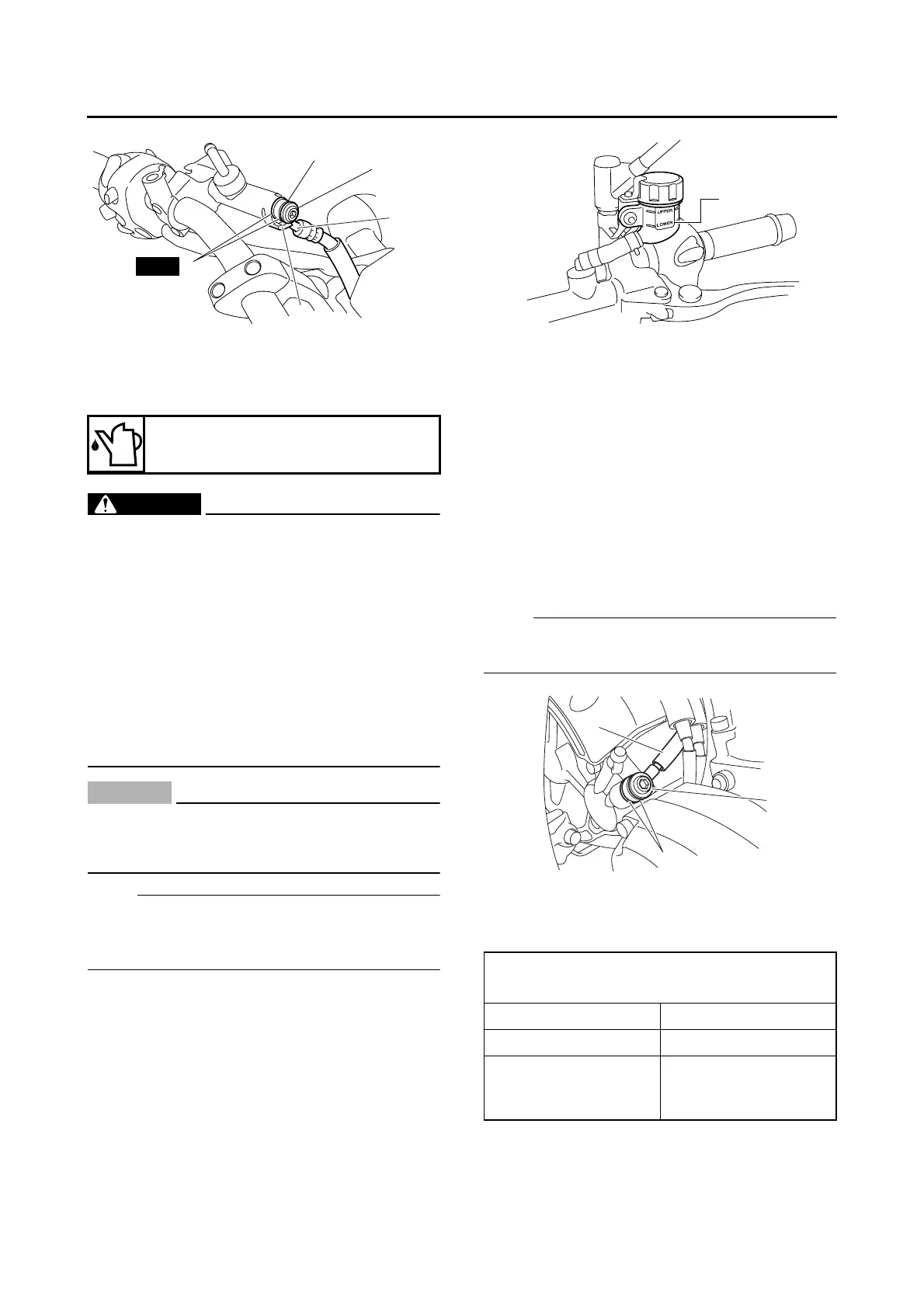CLUTCH
5-61
3. Fill:
• Clutch fluid reservoir
(with the specified amount of the recom-
mended clutch fluid)
WARNING
EWA13370
• Use only the designated clutch fluid. Other
clutch fluids may cause the rubber seals to
deteriorate, causing leakage and poor
clutch performance.
• Refill with the same type of clutch fluid that
is already in the system. Mixing clutch flu-
ids may result in a harmful chemical reac-
tion, leading to poor clutch performance.
• When refilling, be careful that water does
not enter the clutch fluid reservoir. Water
will significantly lower the boiling point of
the clutch fluid and could cause vapor lock.
CAUTION:
ECA13420
Clutch fluid may damage painted surfaces or
plastic parts. Therefore, always clean up any
spilt clutch fluid immediately.
NOTE:
In order to ensure a correct reading of the clutch
fluid level, make sure the top of the reservoir is
horizontal.
4. Bleed:
• Clutch system
Refer to “BLEEDING THE HYDRAULIC
CLUTCH SYSTEM” on page 3-14.
5. Check:
• Clutch fluid level
Below the minimum level mark “a” → Add the
recommended clutch fluid to the proper level.
Refer to “CHECKING THE CLUTCH FLUID
LEVEL” on page 3-14.
6. Check:
• Clutch lever operation
Soft or spongy feeling → Bleed the clutch
system.
Refer to “BLEEDING THE HYDRAULIC
CLUTCH SYSTEM” on page 3-14.
ET5YU1020
REMOVING THE CLUTCH RELEASE
CYLINDER
1. Remove:
• Clutch pipe union bolt “1”
• Copper washers “2”
• Clutch pipe “3”
NOTE:
Put the end of the clutch pipe into a container
and pump out the clutch fluid carefully.
EAS25330
CHECKING THE CLUTCH RELEASE
CYLINDER
Recommended clutch fluid
Brake fluid DOT4
2
1
3
a
b
New
Recommended clutch component replace-
ment schedule
Piston seals Every two years
Clutch hose Every four years
Clutch fluid
Every two years and
whenever the clutch
is disassembled
a
1
2
3

